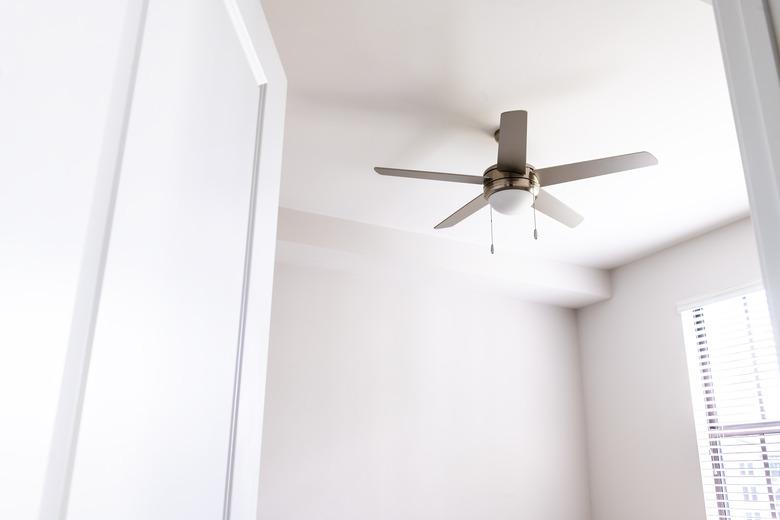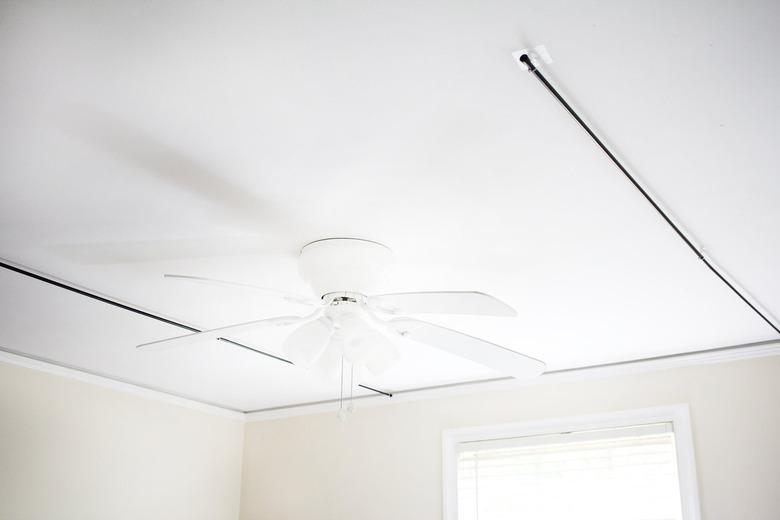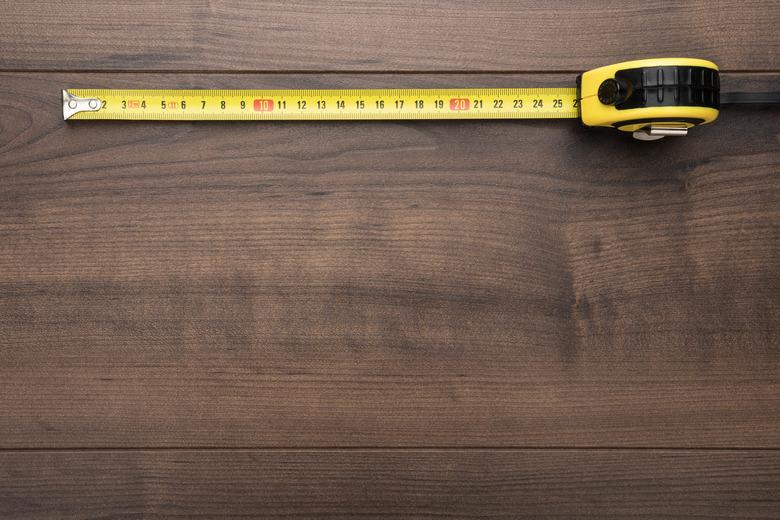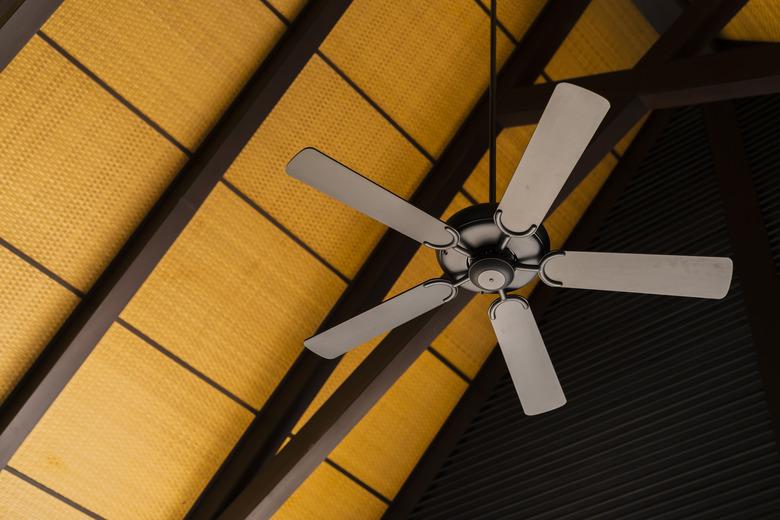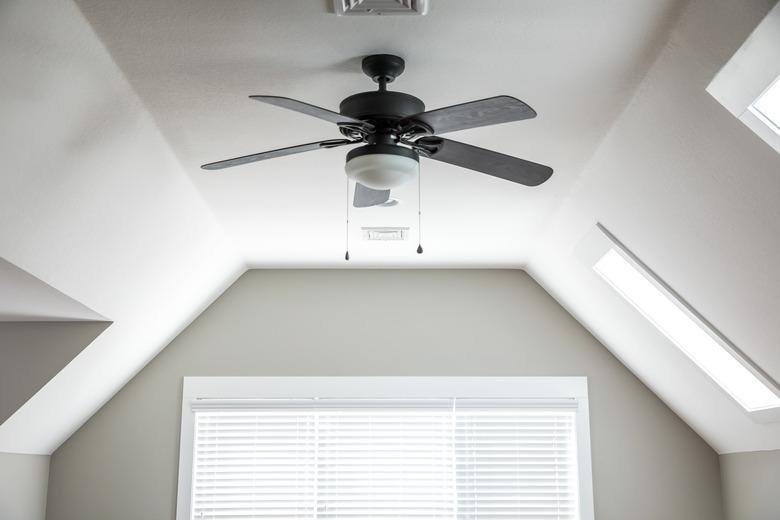What Size Ceiling Fan Is Best For My Room, And How Do I Measure For It?
Picking out a new ceiling fan should be easy enough, right? But if you've ever wandered the aisles of a home improvement store, you'll realize how many different options there are to choose from. Not only is the ceiling fan type an important factor, but the ceiling fan size is also a major consideration because it affects how well the fan works in your space. Learning how sizing works can help you choose the best ceiling fan for every room in your house. Here's how to measure ceiling fan size and determine which one to get for your room.
Ceiling Fan Size Basics
Ceiling fans come in a range of sizes measured by their diameter — the distance from one side of the fan to the other. The typical ceiling fan size is between 29 inches and 54 inches in diameter. However, you can find some larger and smaller ceiling fans if needed.
The mounting height of a ceiling fan also varies and can impact the air circulation and effectiveness of the fan. Flush-mount ceiling fans don't move air as well as standard ceiling fans with downrods do, but flush-mounts are better for rooms with low ceilings because they don't take up a lot of space. The downrods for standard ceiling fans come in various lengths. The right one for your space ultimately depends on the ceiling height in the room.
Ceiling Fan Size Based on Room Square Footage
The room size impacts how large of a ceiling fan you need. If you go too small, your ceiling fan won't create enough air movement and you'll still feel hot. Go too large and you'll get too much air movement, which will make the room uncomfortable. Knowing the square footage of your room helps you determine the correct size of ceiling fan to get the optimal air circulation.
The room dimensions also help you determine the largest ceiling fan you should have in the space to ensure the ceiling fan blade sweep isn't too big. When determining what size ceiling fan to get for your room, make sure the ceiling fan blades will be a minimum of 18 inches from the wall on all sides, ideally with the fan centered in the room. That means your room should be at least 36 inches wider and longer than the ceiling fan to leave 18 inches on all four sides.
How to Measure Your Room for a Ceiling Fan
When choosing a new ceiling fan, start by calculating the square footage of your room. To do this, follow these steps:
- Measure the length of the room in feet.
- Measure the width of the room in feet.
- Multiply those numbers to calculate the square footage.
- For L-shaped rooms or other odd shapes, measure each section separately if you plan to put a ceiling fan in each area.
Once you have the square footage of your room, you can use a general ceiling fan size chart based on square footage, but it's also a good idea to refer to the product information. The manufacturer generally provides details about the ideal room size for each ceiling fan model.
Room Height for a Ceiling Fan
You'll also want to measure the ceiling height in your room. Extend your tape measure from floor to ceiling to get the measurement to help you decide between a flush-mount and a regular ceiling fan. This will also helps you determine how long of a downrod you need.
The ideal height for a ceiling fan is 8 to 9 feet. In any case, the bottom of the fan needs to be a minimum of 7 feet off the floor. Hugger, low-profile, or flush-mount ceiling fans are best in rooms with ceilings that are about 8 feet or lower. Standard ceiling fans with downrods are better for ceilings that are over 8 feet since they better circulate air in the room.
Basic downrods are usually 3 to 5 inches long, but you can get longer ones ranging from 6 inches to 120 inches for high ceilings. Choose a downrod length based on the ceiling height so the fan sits 8 to 9 feet above the floor. The ceiling fan body usually measures about 8 to 12 inches; the length of the downrod is added to that.
To calculate the downrod length, start with the ceiling height measurement. Say you have 12-foot ceilings and your ceiling fan is 12 inches high, which brings the measurement down to 11 feet. If you want the ceiling fan to hang 9 feet off the floor, subtract that from 11 feet to get 2 feet. A downrod of 2 feet, or 24 inches, would position the fan 9 feet high.
Ceiling Fan Size and CFM
When you turn on your ceiling fan, it moves air to make you feel cooler. How much air a specific ceiling fan moves is measured in cubic feet per minute, or CFM. Larger fans typically have a higher CFM, but two ceiling fans with the same diameter can have different CFM ratings. Comparing those numbers helps you determine which fan will generate more airflow. A higher CFM number means the fan moves more air.
The blade span is a major factor in CFM; a wider diameter can generally move more air than a smaller one. The shape and angle of the blades also play a role in the CFM. Blades that are aerodynamic move air more efficiently and have a higher CFM. Differences in motors can also raise or lower the ceiling fan's CFM based on how powerful they are.
In general, large rooms need larger fans with a higher CFM to cool the space effectively. Small rooms need a lower CFM and a smaller fan to avoid overpowering the room with too much airflow. Here is a general guideline for CFM based on room size in square feet:
Current Ceiling Fan Size
If you already have a ceiling fan in the room, it can be helpful to know what size it is. You can get a replacement ceiling fan that's the same size if it adequately cools your room. However, if it doesn't provide enough air movement, you might want to bump up to a larger fan with a higher CFM rating.
To measure an existing fan with an even number of blades that are placed opposite of each other, simply measure from the tip of one blade to the tip of the blade opposite it. For an uneven number of blades, measure from the center of the fan to the tip of one blade and double that number.
